It is now 12 pm, we leave the Aral Sea to board a bus, destination: Baikonur Cosmodrome!
It will take us 7 hours to get there, we will have to traverse the desert steppes of Kazakhstan, about 200 kilometres east of the Aral Sea. The legendary Baikonur Cosmodrome was initiated by the Soviet Union in 1955, and made famous for the launch of the first manned spacecraft in human history: Vostok 1 which took Yuri Gagarin into space for the very first orbit around the earth.
Many other historic flights made Baikonur a nearly mystical place to visit: the first man-made satellite, Sputnik 1, on October 4, 1957; the first spacecraft to travel close to the Moon, Luna 1, on January 2, 1959; the first manned orbital flight by Yuri Gagarin on April 12, 1961; and the flight of the first woman in space, Valentina Tereshkova, in 1963. 14 cosmonauts of 13 other nations, such as Czechoslovakia, East Germany and France, started their historic journeys from here. It is leased by the Kazakh government to Russia (through the year 2050) and is managed jointly by the Russian Federal Space Agency (ROSCOSMOS) and the Russian Space Forces.
Baikonur and its underground is fully equipped with facilities for launching both manned and unmanned spacecraft. It supports several generations of Russian spacecraft: Soyuz, Proton, Tsyklon, Dnepr, Zenit and Buran.
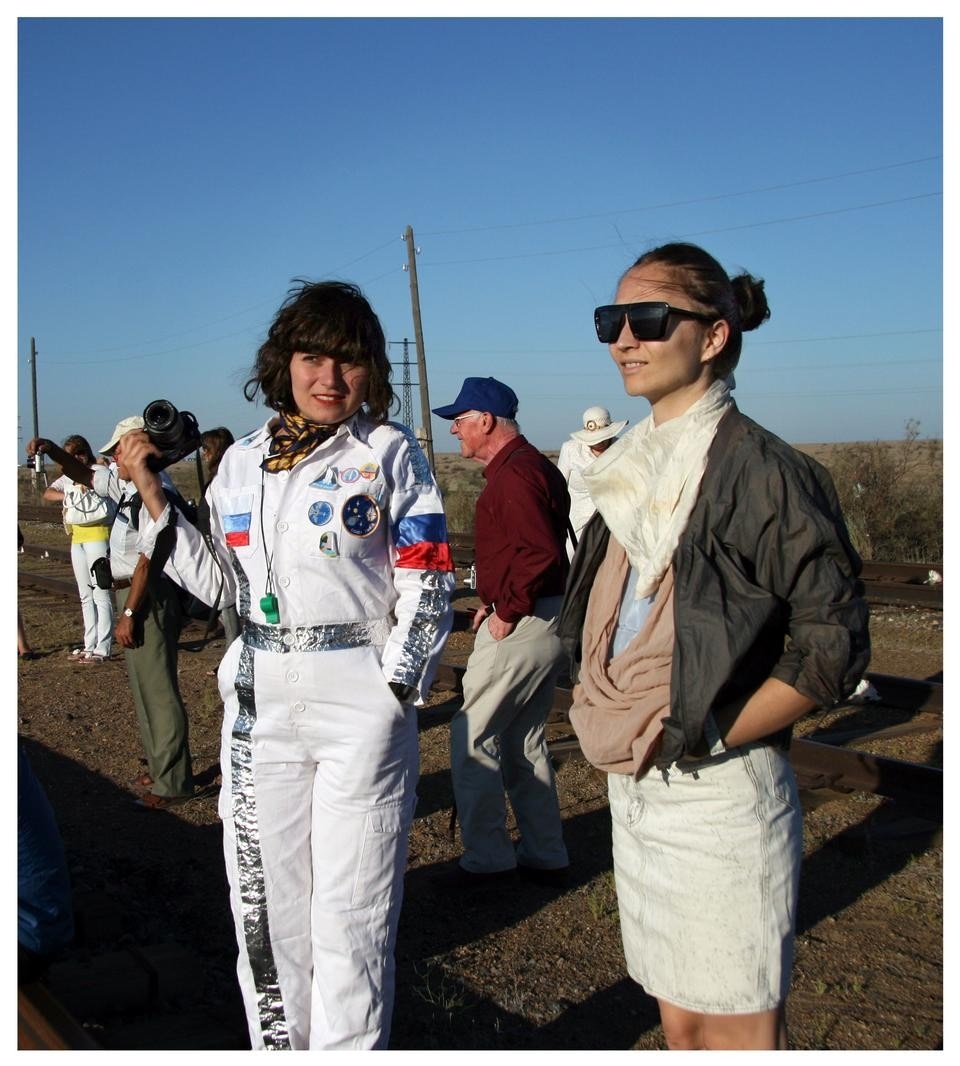
We have been given access by the Russian government and the British Space Agency to attend the Zenit-3M rocket's lift-off. It is an unmanned vehicle, atop its booster a Spektr-R radio observatory which will become part of RadioAstron.
A supporting town was built in 1966 to provide housing, schools and support infrastructure for workers. This is where we will find our hotel.
We cross the desert, it is pitch black, there is no road…We listen to Carl Sagan and his Cosmos series; we keep looking through the windows, wondering how we can make our way so far in the dark? In front of us, deep smokey sand tornados, real dust devils, while our bus risks its way across the empty land.
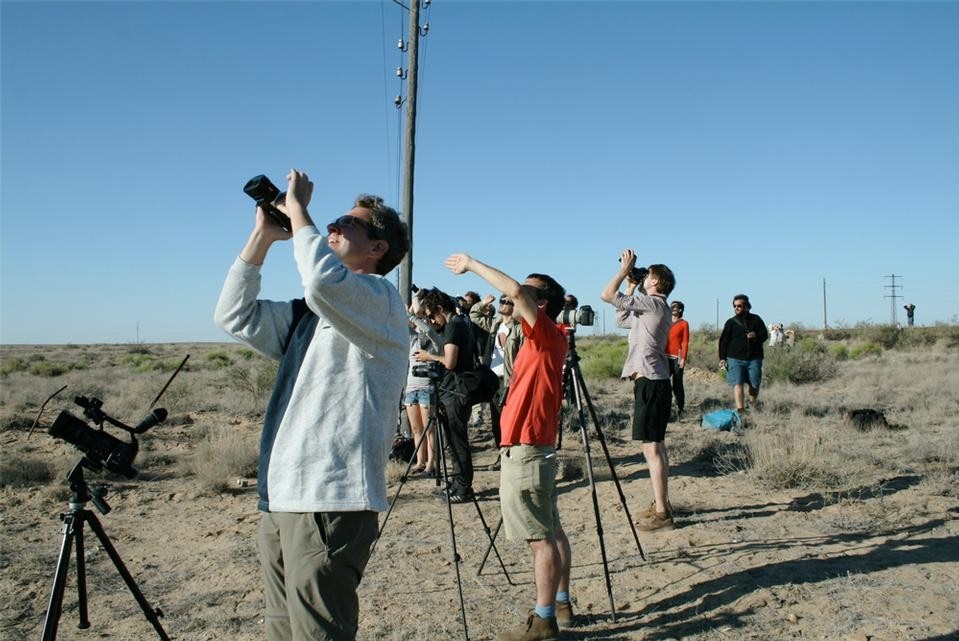
8:00 am, There is a large field which separates us from the Zenit telescope, on our right another group of spectators, a few of whom helped build the telescope. Some of us walk, always deeper in the field to get closer and closer to the pad.
Oups...
I need to stop there; Michael Madsen, director of the film Into Eternity is filming the scene in 3D, and I walked right into his frame...
Here is a good place, nothing else in front of me but the elongated gantry arms that holds the Zenit-3M in position.
Us, all in a field, five kilometres away from a rocket lift off. Five kilometres is:
-The length of an Olympic run
-1250 elephants end to end
-109 Soyuz rockets
-2631 horizontal cosmonauts
-1026 sixteen-foot ladders
-6250 concrete bags
Hold on…smoke appears…
Nothing very extravagant, just a door, a double bed and a TV, a very long corridor and a few trees planted here and there with the names previous residents who made it to orbit.
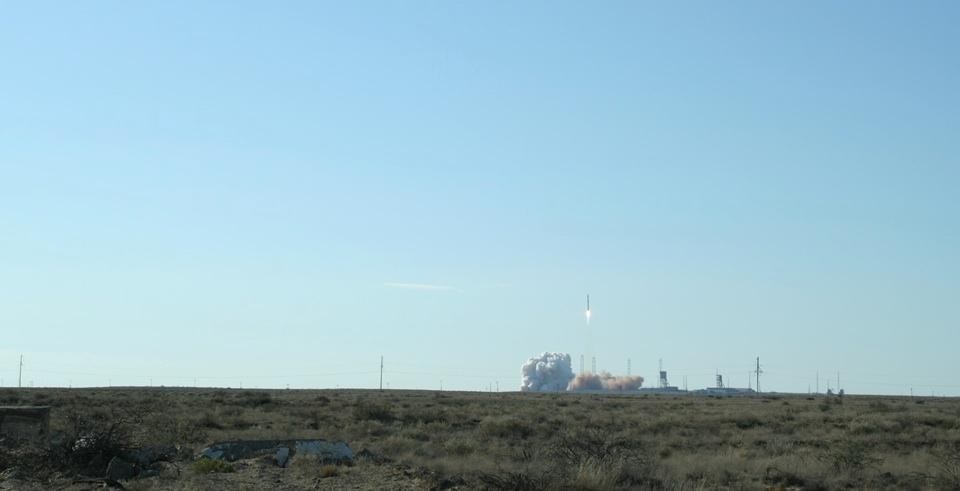
Rather magical moment, the telescope is gone, rotating around our planet while gravity keeps us here. We are incapable to move, waiting for the next telescope to rise from the ground. We are not weightlessness, we are the lost astronauts. Creative soldiers who just missed their unique chance to fight with gravity.
We don't have a real rocket, but luckily the Russians produced some interesting placebos, we have here some vodka bottle in shape of the Soyuz. We all get one zip and we start off again.
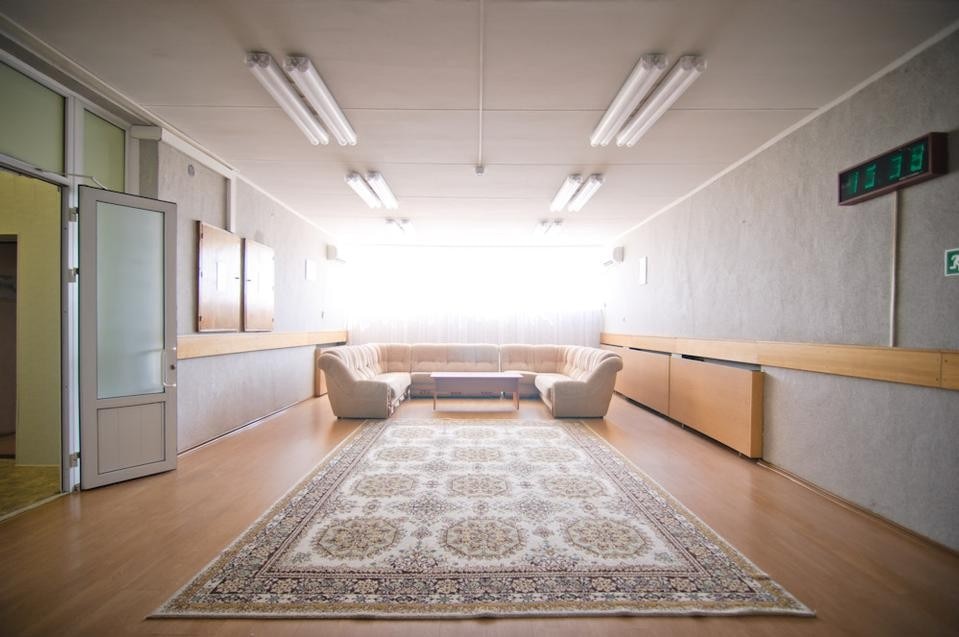
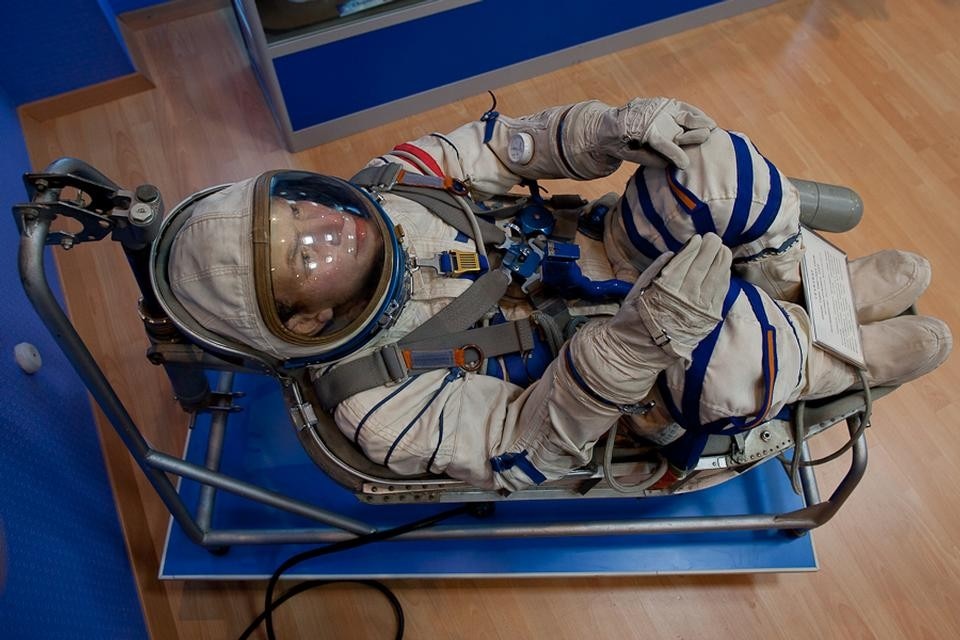
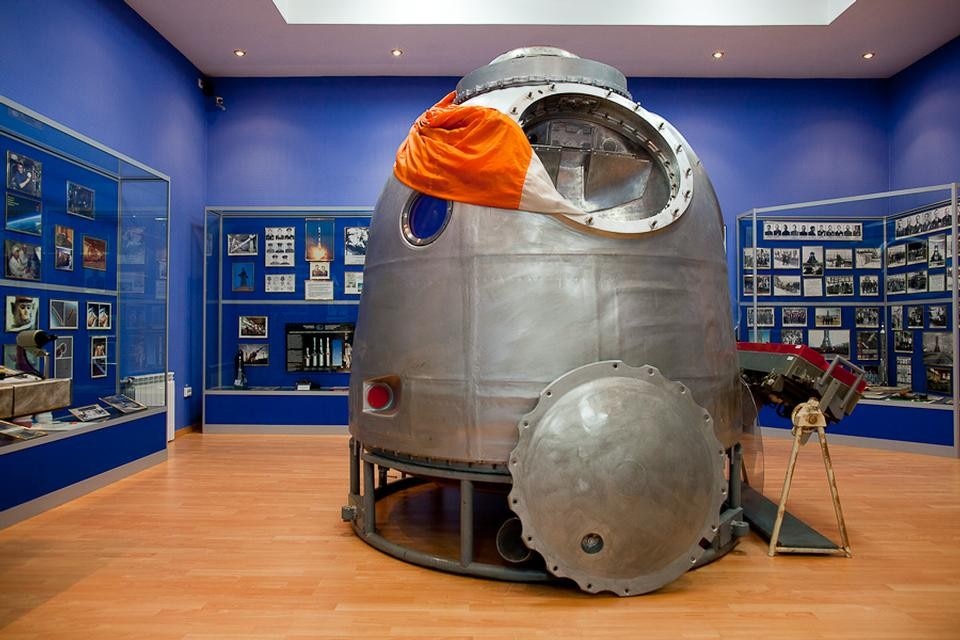
We approach it—probably too close to discover that this is hiding an underground tunnel, access to the 'backstage' of Baikonur.
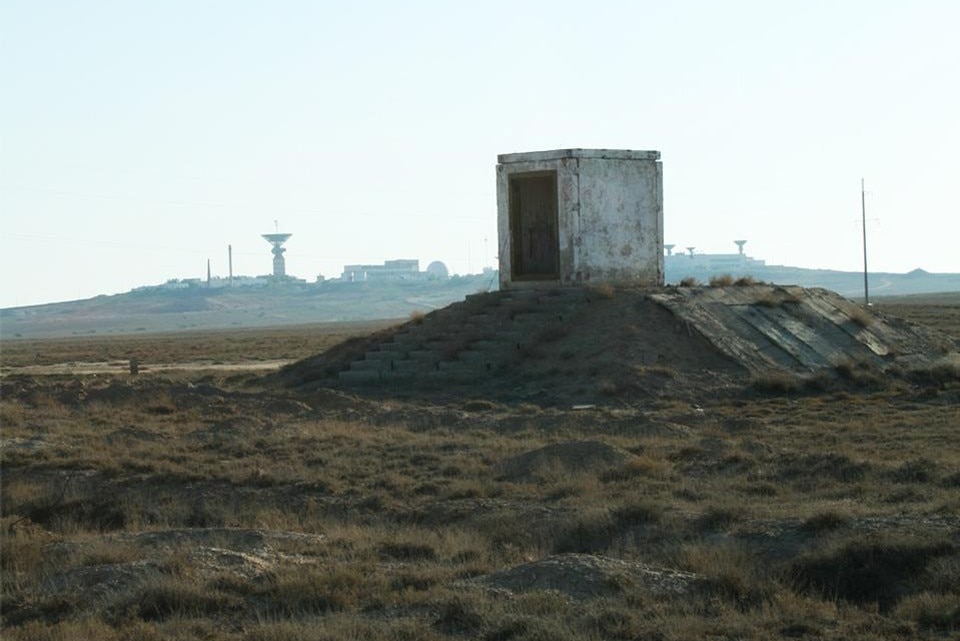
Contemplation and curiosity only stops with the sirens made by a police car who come to tell us that we went too far into the invisible boundaries of their military space. We have to leave…
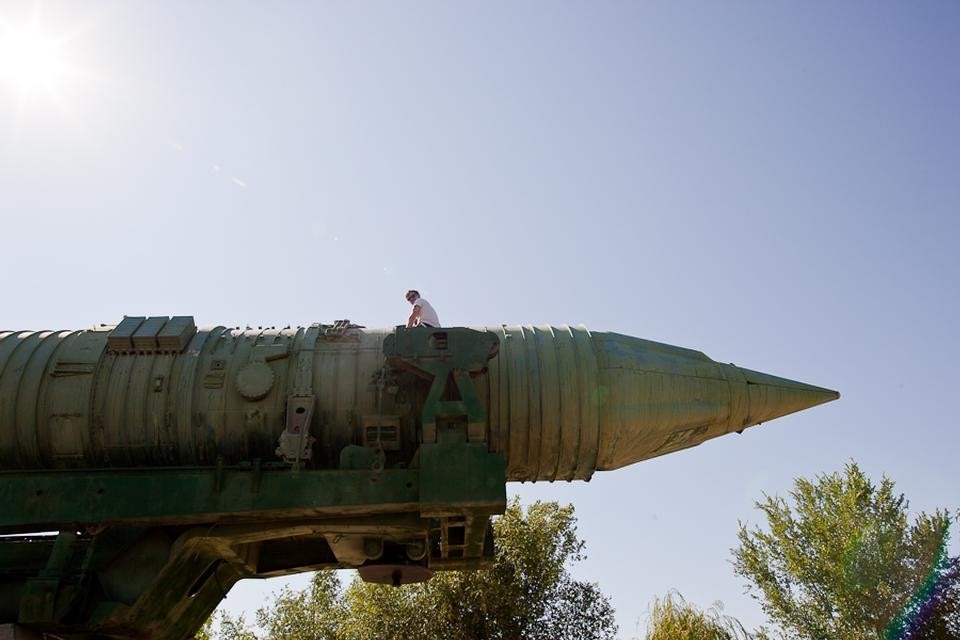
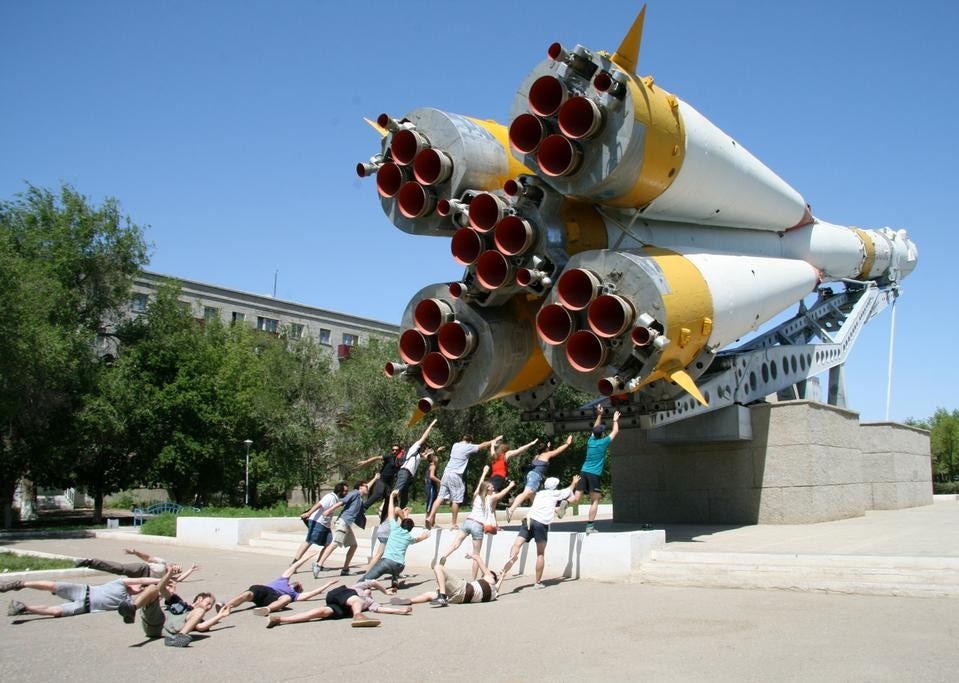
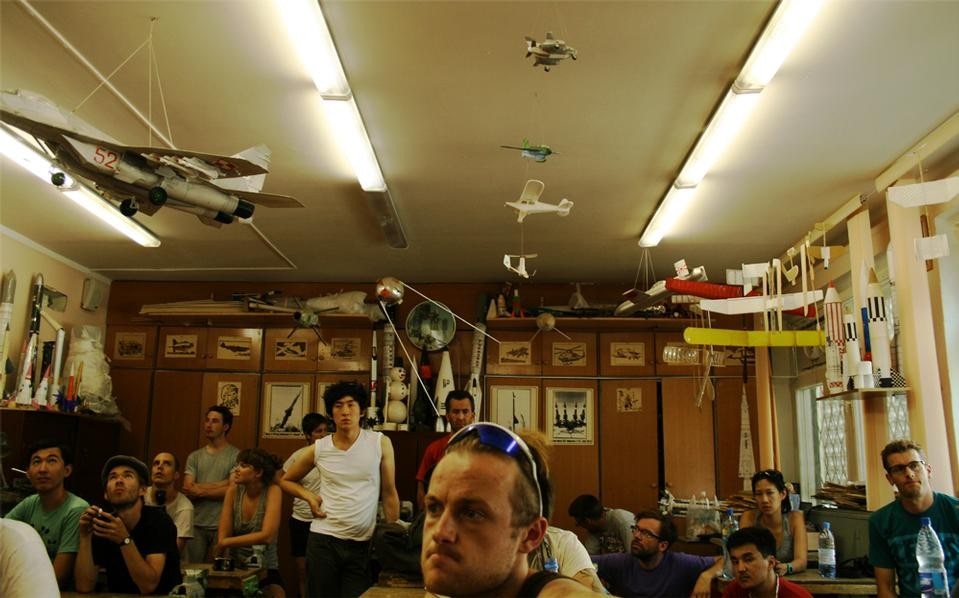
Eventually we come to the point where we experience what space expert Régina Peldszus calls an "off-nominal situation", something abnormal.
Michael Madsen manages to have access to one of the rocket's capsule in display in the school. I imagine that this was of the Soyuz rocket, but I might be wrong. We board in its tight cockpit, and take a seat while surrounded by dust. Regina is on my left, Michael on my right.
For 15 minutes, we press every single button, a perfect playground for adults. I imagine that I am the commander and we start to process the inspection of the engine, everything seems to be going according to plan, we should liftoff in a few seconds. On our right the little hatch that gave us access to the capsule is wide open. We are playing the game; I keep shooting numbers while Michael presses the commands.
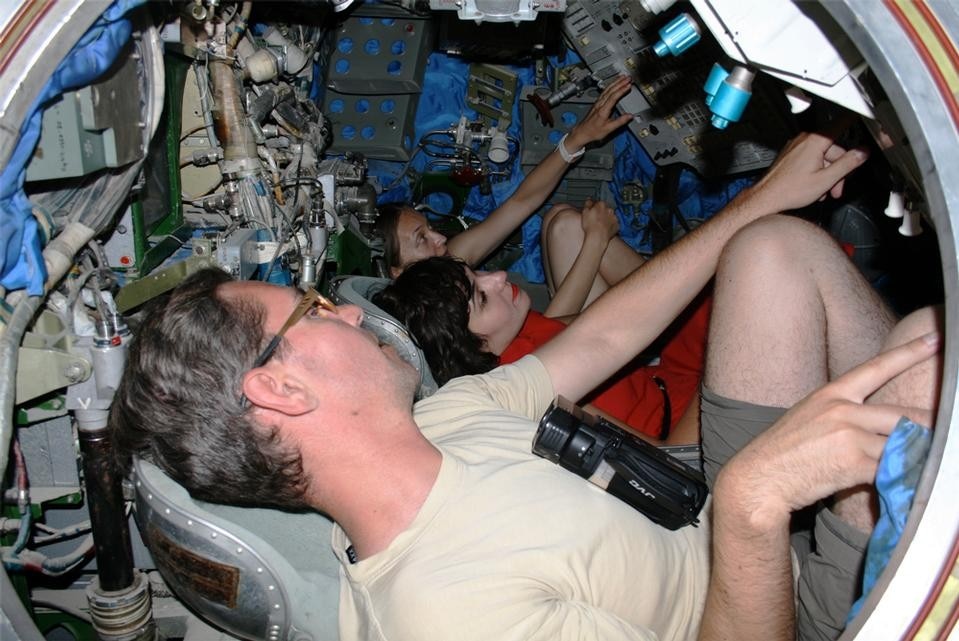
A bit of air is coming out of the broken windows of the hatch but this is really it. Where we to stay in this capsule for a very long time? Still in the playground set, I keep on pressing all the buttons, probably one of them will control the opening of the hatch. Or maybe not? Shall I inform Ground control? I find myself getting hysterical, such a thrilling experience! Well… actually… We are stuck. Completely stuck…
Tomorrow's Headlines:
"They lived the dream a step too far"
"Modern heroes, they failed to get to space, they return to the ground"
"On board of the Soyuz rocket, they die pathetically in a school"
"The cockpit-coffin"
"Too heavy to experience weightlessness, they will stay forever buried under the ground"
"Don't cry, they reach the stars but remain with the dust"
A landing:
The rest happens quickly, we hear the guide coming and screaming in Russian, he then jumps on the top of the capsule. He liberates us from our secret space site. I am pulled up by the arms through the top of the capsule. For a bit I was blind, the light was too strong. 'We have just landed, is that right?' I asked the guide.
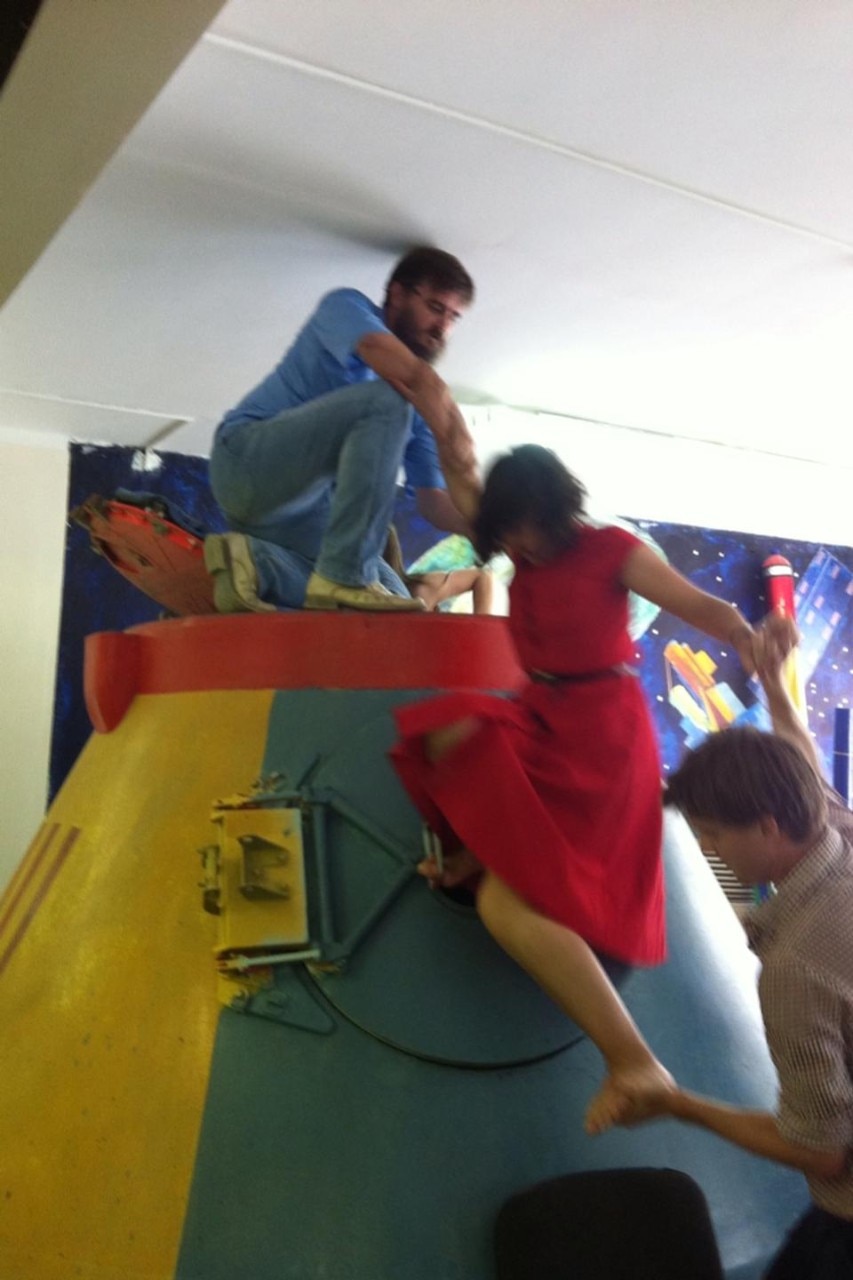
'Imagination will often carry us to worlds that never were. But without it we go nowhere', said Carl Sagan.
Indeed, the Unknown Fields Division summer expedition felt pretty much invented in our heads. I can barely give the trip a texture, or make it tangible. It is like living the "Odyssey" with Homer and meeting with Ulysses and the Cyclops on the moon. We were travelling on Noe's boat discovering new lands with Columbus. We went to the unknown and we will remain there for a little while.
If you wish to be in touch with us, you will find us, the creative soldiers, between the warm nucleus of earth and the far orbit of the Zenit. We do have mobile phones, but no electricity to power them.
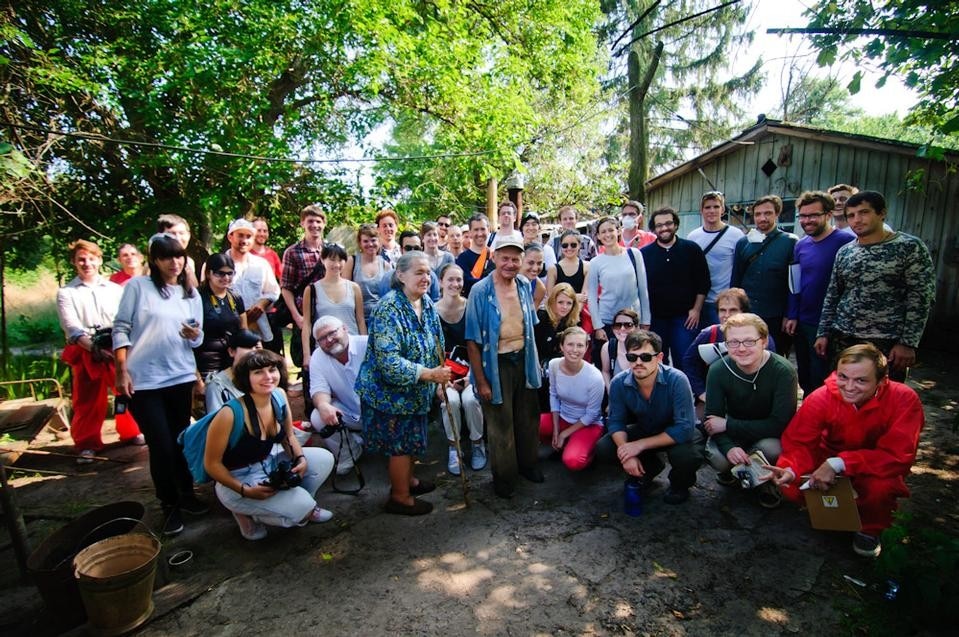
[1]Video by Neil Berrett.

